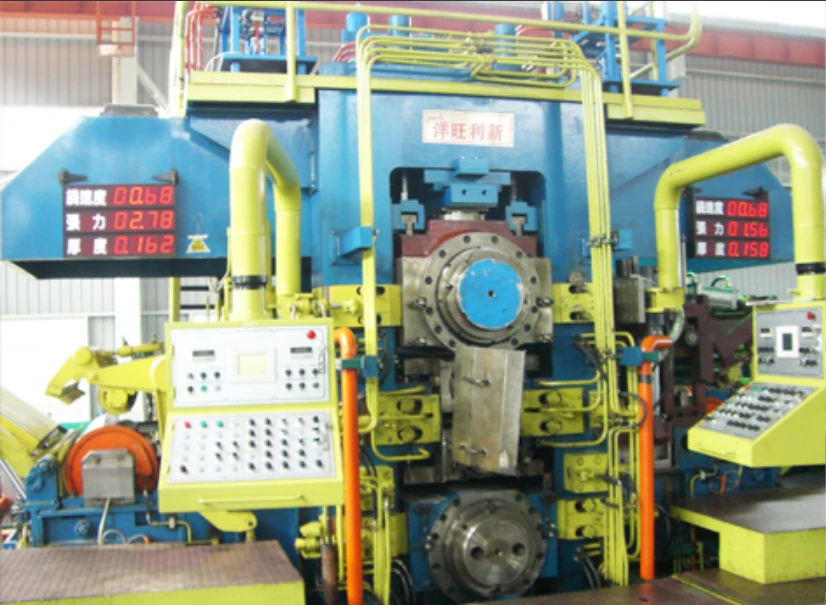
Temper Rolling Mill: Want Superior Flatness & Strength?
Inside the Temper Mill: Why Skin-Pass Still Makes or Breaks Coil Quality
Walk any steel service center and you’ll notice the subtle difference: sheet that behaves on the press versus sheet that fights back. That line is often drawn at the temper rolling mill. To be honest, I’ve seen mills that look glamorous on a glossy brochure yet stumble on flatness, and I’ve seen lean, no-drama lines that deliver coils operators actually love. This one, branded simply “Temper Mill,” comes out of No.1518, LAR Valley Int'l, Guangwai Avenue, Xicheng District, Beijing, 100055—and it’s built for the real grind.

What’s driving demand (and upgrades) right now
EV body panels, thinner-gauge appliances, and cleaner packaging steels. That’s the trifecta. Trends I’m watching: closed-loop AGC/AFC with shape meters, EDT/shot-blasted roll textures for dialed-in Ra, and smarter energy use (regenerative drives, better lube capture). Many customers say they’re chasing fewer press breaks and a tighter cosmetic window—makes sense, margins are in the last 0.5% of quality.
Process flow (real-world)
- Material: low-carbon CR, IF, HSLA; tinplate stock; galvanized substrates.
- Entry: coil car → uncoiler → end welder → accumulator (optional).
- Cleaning/brush: alkaline or electrolytic; pre-rinse to cut carryover.
- Temper pass: 4Hi/6Hi stand; reduction ≈0.3–2.0% (soft reduction up to ≈3%).
- Flatness control: work-roll bending, intermediate roll shifting, shape meter feedback.
- Oiling/finishing: electrostatic oiler; surface Ra set by roll texture.
- Inspection: offline light table + on-line surface/shape monitors.
- Testing: tensile per ASTM A370, hardness per ASTM E18, Ra per ISO 4287/4288, flatness per EN 10131.
Key specifications (Temper Mill)
| Origin | No.1518, LAR Valley Int’l, Guangwai Ave, Xicheng, Beijing, 100055 |
| Thickness range | ≈0.20–3.0 mm (real-world use may vary by grade) |
| Max strip width | ≈1,850 mm |
| Line speed | Up to ≈1,200 m/min |
| Reduction (skin-pass) | ≈0.3–2.0% (soft reduction mode to ≈3%) |
| Stand configuration | 4Hi or 6Hi; single or twin stand |
| Surface finish target | Ra ≈0.4–1.6 μm (via EDT/shot-blast rolls) |
| Automation | AGC/AFC, shape meter, auto recipe & coil reports |
Why it matters (benefits you feel on the press)
- Eliminates yield point elongation “terrace,” improving deep-draw behavior.
- Cleans and textures the surface for predictable lubrication and paint.
- Levels out flatness/straightness; fewer wrinkling and edge-wave complaints.
- Soft reduction option tweaks thickness and mechanical properties.
Vendor snapshot (quick compare)
| Vendor | Mill Type | Max Width | Automation | Certs | Lead Time |
|---|---|---|---|---|---|
| Temper Mill (Beijing) | 4Hi/6Hi, single/twin | ≈1,850 mm | AGC/AFC, shape meter | ISO 9001, CE (project-based) | ≈5–8 months |
| EU OEM A | 6Hi twin | ≈2,000 mm | Advanced shape/AI advisory | ISO 9001, CE | ≈9–14 months |
| Japan OEM B | 4Hi single | ≈1,600 mm | AGC, expert systems | ISO 9001 | ≈6–10 months |
Applications and customization
Automotive outers and reinforcements, appliance doors, tinplate/food packaging, construction sheet, pre-paint lines. Custom options: roll texturing (EDT levels), twin-stand for higher elongation, electrolytic cleaning, static/dynamic oilers, coil weights up to ≈35 t, and IEC 60204-1 compliant electricals. If you’re swapping substrates often, recipe libraries are a sanity saver.
Field notes, tests, and service life
In trials I reviewed, elongation bump was ≈2–4%, Ra held within ±0.15 μm, and flatness under ≈10 I-units on 0.8 mm IF steel. Yield-point marks vanished after a single pass. Typical service life: work rolls 8,000–15,000 t between grinds; bearings >50,000 h; line frames 15–20 years with scheduled overhauls. Certifications commonly requested: ISO 9001 factory QA, CE marking for the line, and UL 508A on control panels (region-dependent).
Two quick case studies
- Automotive tier-1 (EU): press splits on exposed panels dropped by ≈30% after moving to a temper rolling mill recipe with 1.2% reduction and Ra ≈0.9 μm.
- Appliance maker (MENA): coil waviness complaints fell from 7 to 1 per month once shape meter feedback was enabled on the temper rolling mill.
Operators told me the “feel” of the sheet changed—less springback, more predictable lubrication pickup. Surprisingly, small tweaks in roll texture did more than big tweaks in reduction. I guess experience still beats any manual.
References
- ASTM A370 – Standard Test Methods for Tension Testing of Metallic Materials.
- ASTM E18 – Standard Test Methods for Rockwell Hardness of Metallic Materials.
- ISO 4287/4288 – Surface texture: Profile method; rules and parameters (Ra, Rz).
- EN 10131 – Cold rolled uncoated low carbon steel flat products—Tolerances (flatness).
- IEC 60204-1 – Safety of machinery—Electrical equipment of machines.
-
YWLX’s 1450mm Six-Hi Reversing Mill Goes Live in BangladeshNewsNov.24,2025
-
Adjusting Roll Gap in 6Hi Reversing Cold Rolling Mill for Thin StripNewsNov.13,2025
-
Quality Control Standards for Automatic Gauge Control in Strip RollingNewsNov.13,2025
-
Effect of Skin Pass Rolling on Metal DuctilityNewsNov.13,2025
-
Key Components of a Modern TempermillNewsNov.13,2025
-
Common Wear Patterns of Work Roll in Tandem Cold Mill OperationsNewsNov.13,2025
-
Revolutionary Skin Pass Rolling Technology for Enhanced Steel QualityNewsNov.04,2025










